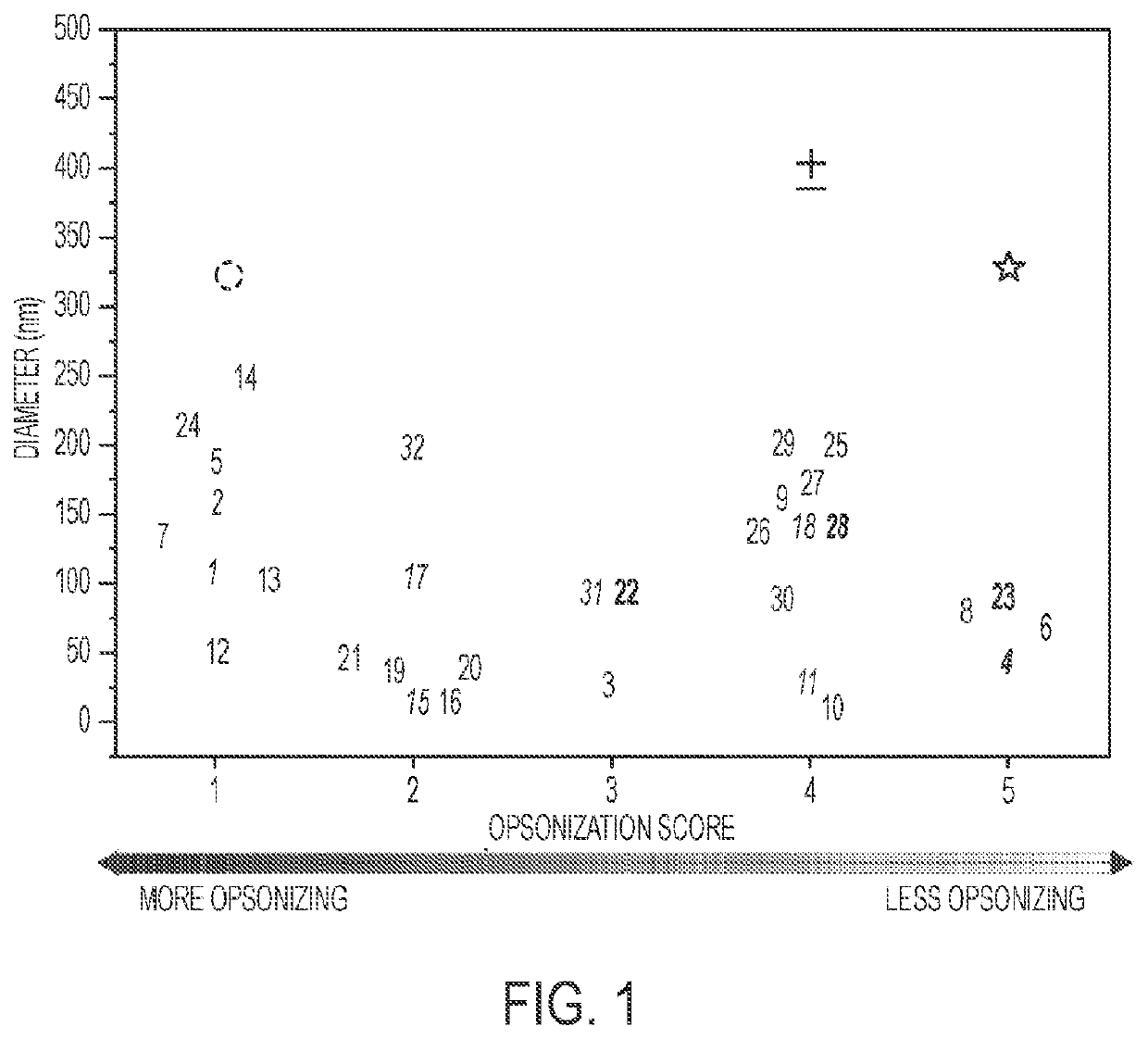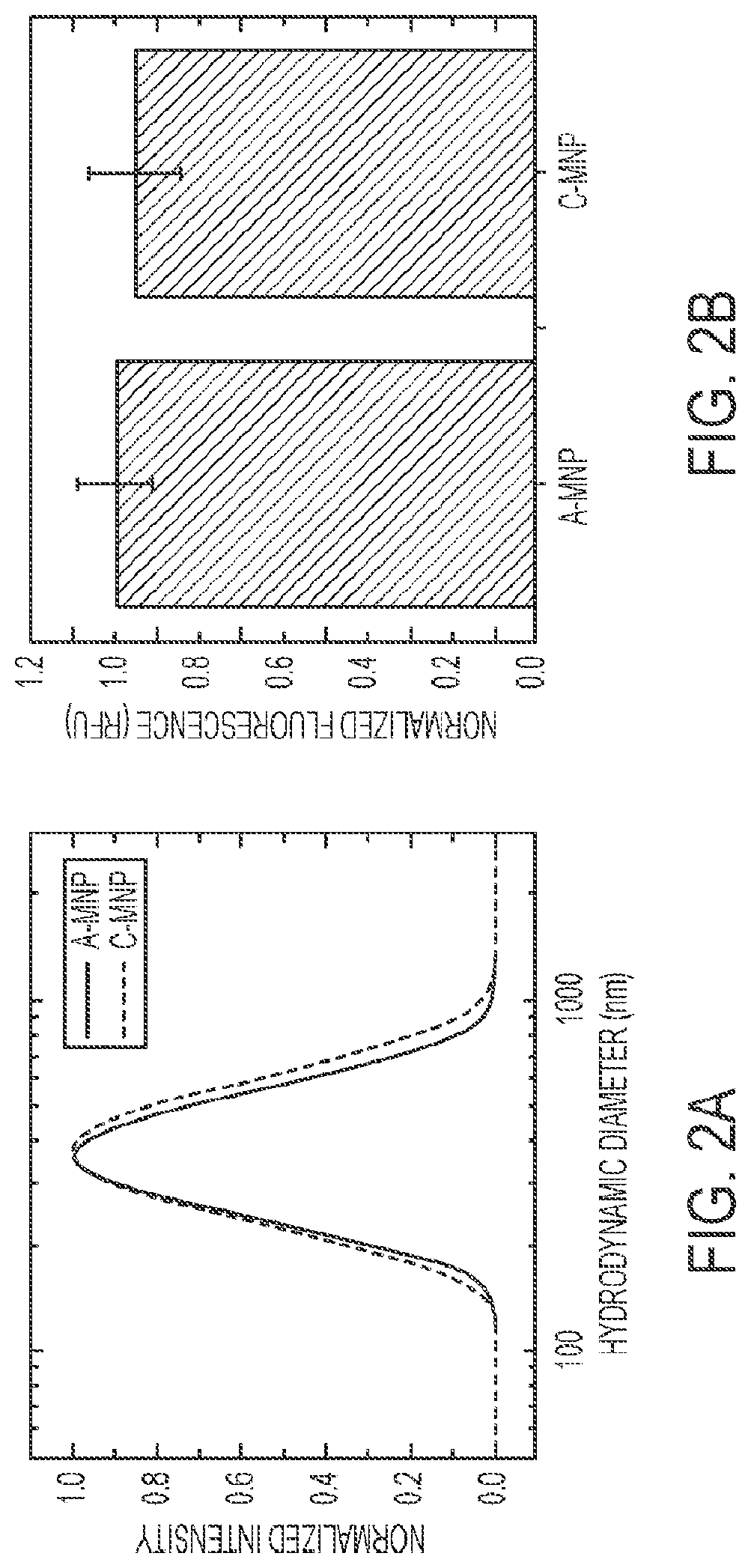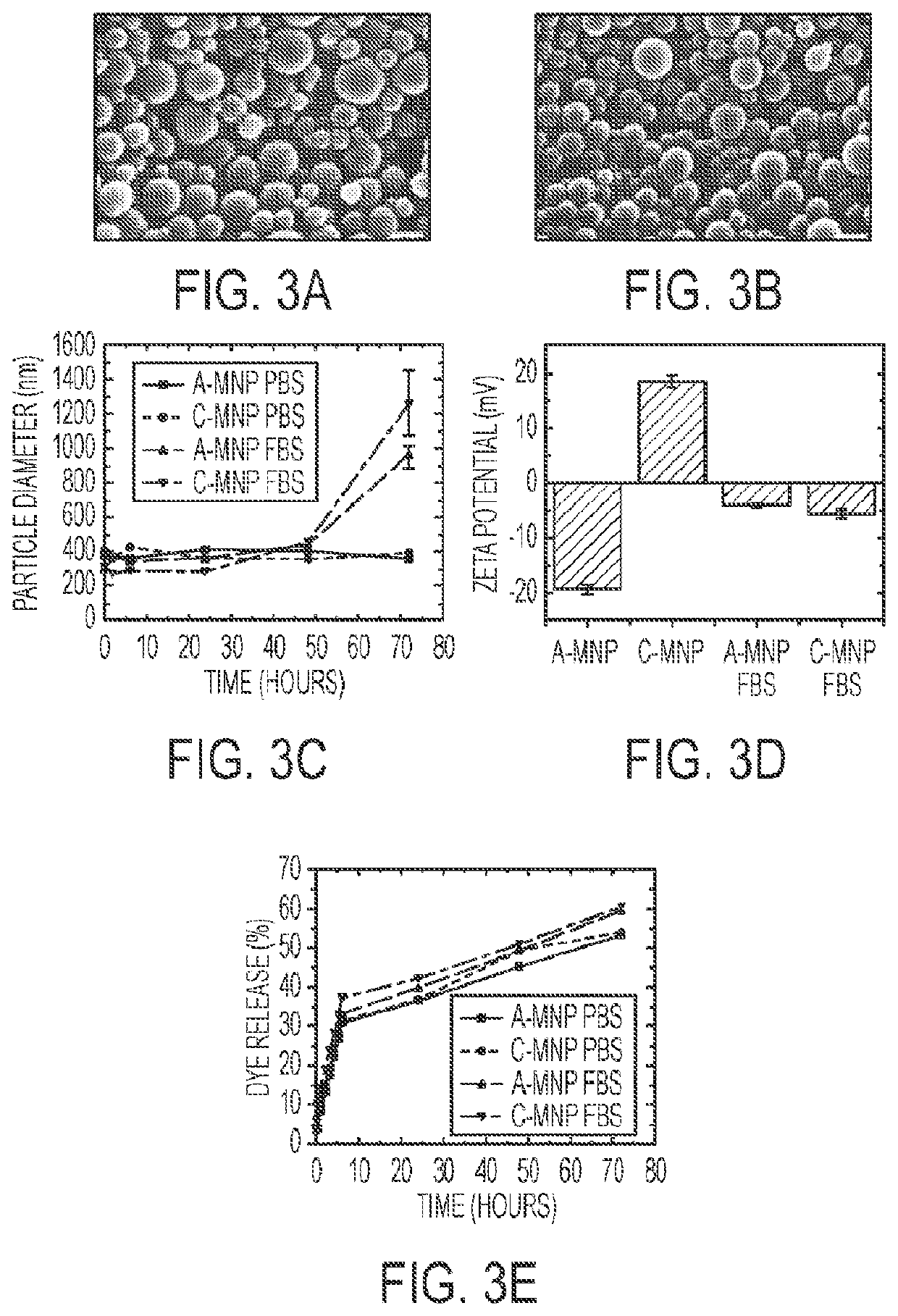Mesoscale nanoparticles for selective targeting to the kidney and methods of their therapeutic use
a technology of mesoscale nanoparticles and selective targeting, which is applied in the field of nanoparticles, can solve the problems that the therapeutic agents of kinase inhibitors, tgfb inhibitors, mtor inhibitors, etc., have not been used in kidney disease treatment, and the toxicity side-effects occur elsewhere in the body
- Summary
- Abstract
- Description
- Claims
- Application Information
AI Technical Summary
Benefits of technology
Problems solved by technology
Method used
Image
Examples
experimental examples
Nanoparticle Biodistribution Literature Survey
[0141]A brief literature survey was conducted to investigate the effects of nanoparticle size and opsonization potential on biodistribution. Publications that studied nanoparticle biodistribution without the use of molecular targeting moieties were selected. Studies performed in diseased animals were excluded in order to determine biodistribution in healthy, uncompromised mice or rats. Only nanoparticles administered intravenously were included. The nanoparticle diameter, surface functionalization, and primary site of localization were recorded from each paper. Of publications disclosing many nanoparticles with minor size iterations, one representative particle was chosen. The opsonization potential of each particle was assigned a score with 1 being the most opsonizing and 5 being the least opsonizing.
[0142]Category binning was performed as follows: 1—PLGA or gold particles with no coating; 2—Relatively opsonizing proteins, small molecul...
PUM
 Login to View More
Login to View More Abstract
Description
Claims
Application Information
 Login to View More
Login to View More - R&D
- Intellectual Property
- Life Sciences
- Materials
- Tech Scout
- Unparalleled Data Quality
- Higher Quality Content
- 60% Fewer Hallucinations
Browse by: Latest US Patents, China's latest patents, Technical Efficacy Thesaurus, Application Domain, Technology Topic, Popular Technical Reports.
© 2025 PatSnap. All rights reserved.Legal|Privacy policy|Modern Slavery Act Transparency Statement|Sitemap|About US| Contact US: help@patsnap.com



